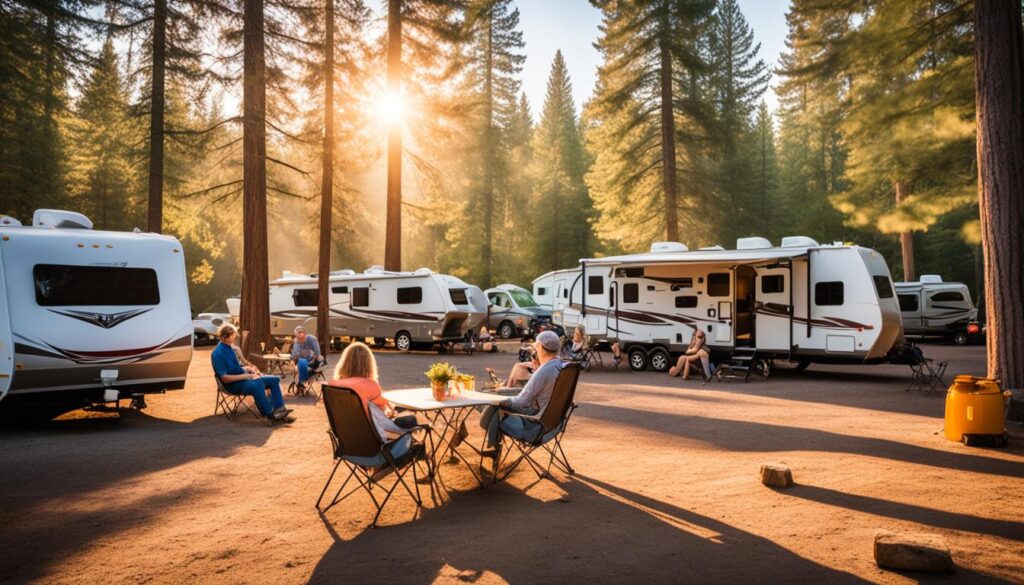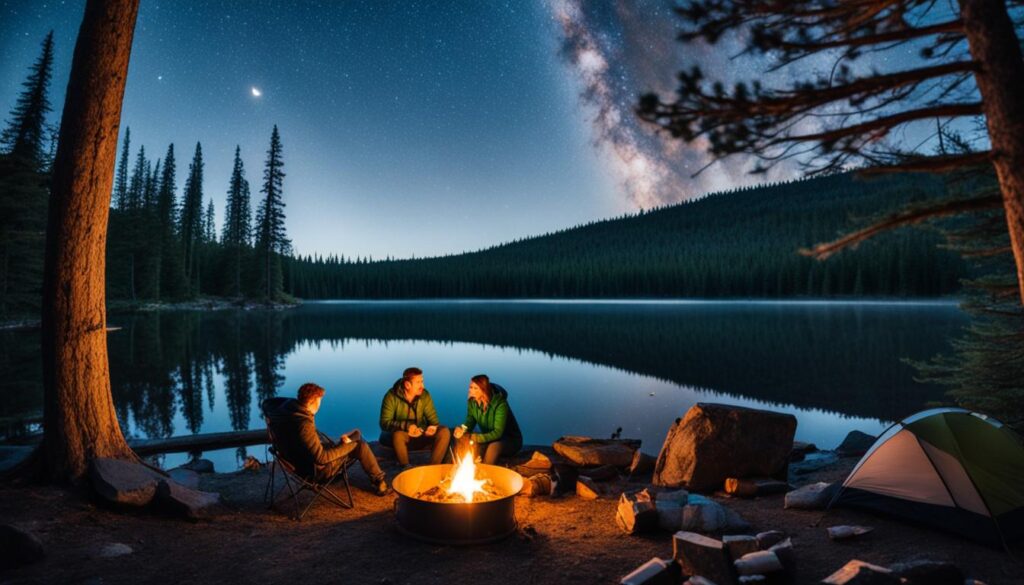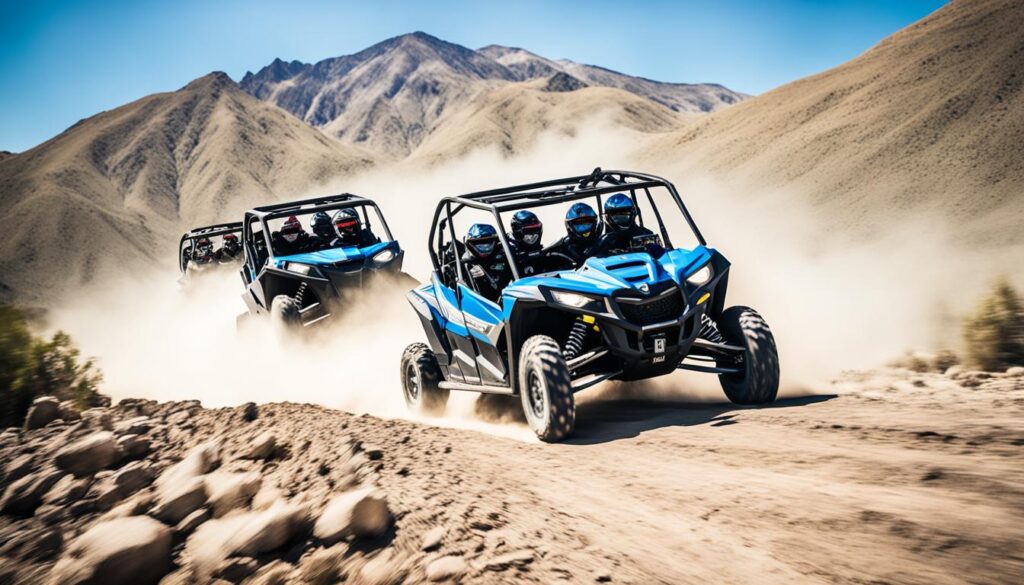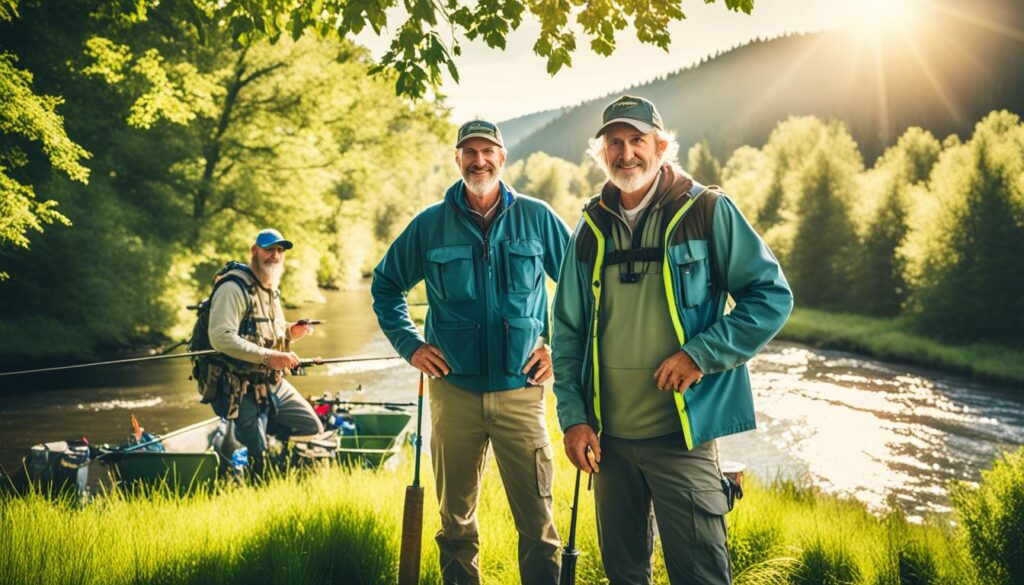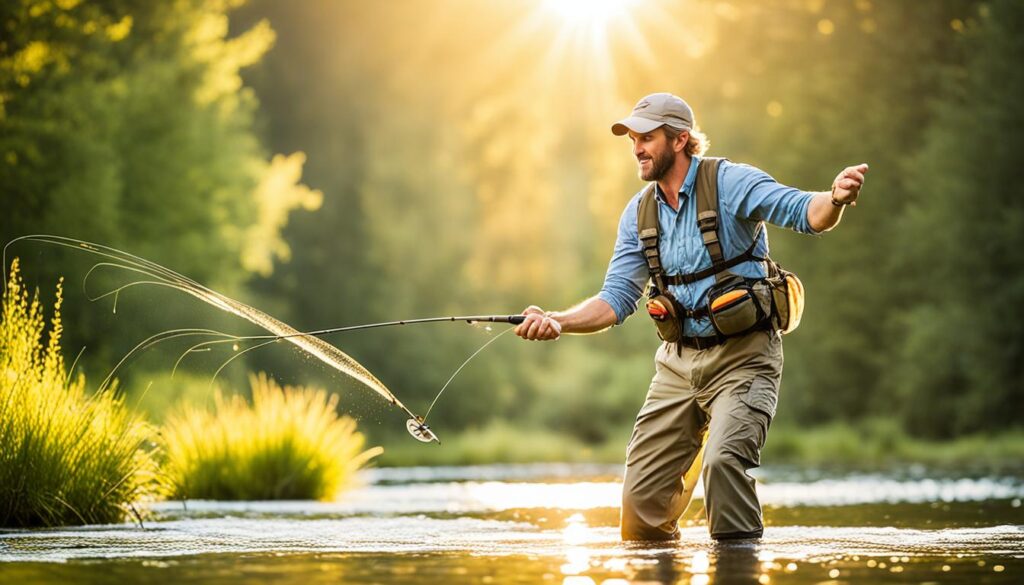Gear up and get ready for an exhilarating off-roading adventure! If you’re new to the world of off-roading, it’s important to familiarize yourself with the essential tips and techniques that will ensure a safe and enjoyable experience. From understanding off-roading safety to choosing the right gear and mastering off-roading skills, this guide is designed to help beginners navigate their way through the exciting off-roading journey. Let’s dive in and begin your off-roading adventure on the right track!
Key Takeaways:
- Never go off-road alone; always have a buddy or join an off-road club for support and assistance.
- Start with easy trails to develop your off-roading skills and gradually progress to more challenging terrains.
- Equip yourself with the right gear, including basic tools, spare tires, and emergency supplies.
- Stay on designated trails to minimize environmental impact and contribute to the sustainability of off-roading.
- Join off-roading communities, learn from experienced off-roaders, and connect with off-roading partners for guidance and support.
Contents
- 1 Avoid Going Off-Road Alone
- 2 Start with Easy Trails
- 3 Have the Right Gear
- 4 Stay on Designated Trails
- 5 Learn Off-Roading Skills and Find Off-Roading Partners
- 6 Consider Vehicle Modifications
- 7 Find Off-Roading Destinations
- 8 Master Common 4WDriving Techniques
- 9 Learn Specific Terrain Techniques (Water Crossings, Hill Climbing, Dust Control, Mud Driving, Sand Driving)
- 10 Conclusion
- 11 FAQ
- 12 Source Links
Avoid Going Off-Road Alone
When it comes to off-roading as a beginner, there’s a critical safety tip that should never be overlooked: avoid going off-road alone. Off-road driving is a skill that requires practice, and even experienced off-roaders can encounter unexpected challenges. That’s why it’s crucial to have the support and assistance of other vehicles and experienced off-roaders by your side.
If something goes wrong during your off-roading adventure, having others with you can make a world of difference. They can provide guidance, help you navigate difficult terrain, and offer assistance in case of emergencies. Additionally, experienced off-roaders can share valuable tips and insights to enhance your off-roading skills and knowledge.
An excellent way to find off-roading companions is by joining local off-road clubs. These clubs bring together enthusiasts who share a passion for off-roading and a commitment to safety. By connecting with like-minded individuals, you can not only enjoy the camaraderie of a community but also ensure a safer off-road experience.
Another option is to find off-roading buddies within your network or through online forums dedicated to off-roading. Building connections with fellow off-roaders can provide you with a reliable network of off-roading companions who can join you on your adventures, offer guidance, and enhance the overall experience.
In summary, off-roading is always more enjoyable and safer when done together. Make it a priority to find off-roading buddies or join local off-road clubs to ensure that you have the support and guidance you need while exploring the thrilling world of off-roading.
“Off-roading is not just about conquering challenging trails, it’s also about the camaraderie and safety that comes from going off-road with a group of like-minded enthusiasts.” – Off-Roading Enthusiast
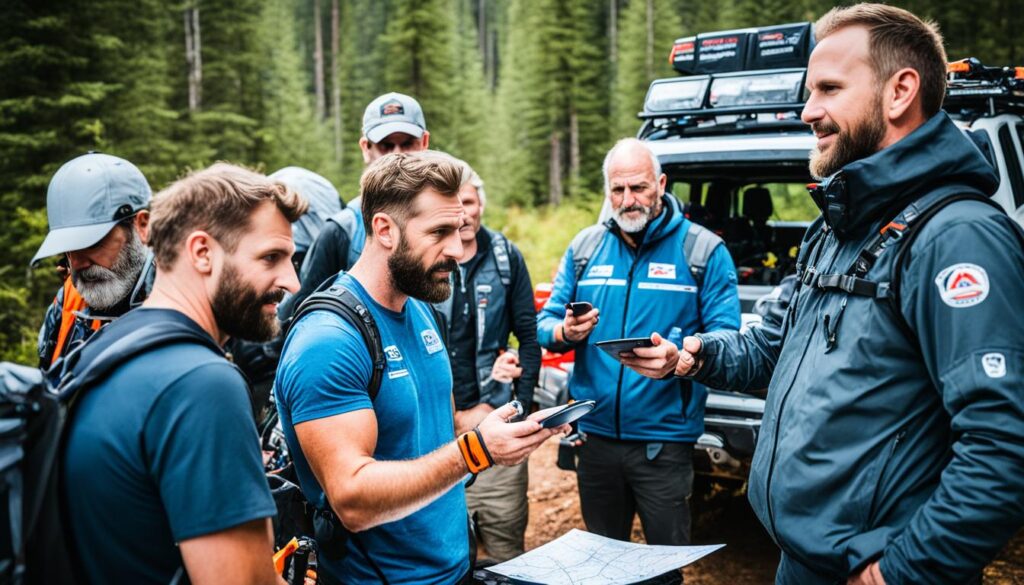
Benefits of Off-Roading Companions
By having off-roading companions, you can:
- Ensure immediate assistance in case of emergencies or breakdowns
- Share valuable tips and insights
- Navigate difficult terrain more confidently
- Create lifelong memories while bonding with fellow off-roaders
Joining Local Off-Road Clubs
Local off-road clubs offer many advantages, including:
- Access to experienced off-roaders who can guide and mentor you
- Organized off-roading events and group outings
- A sense of community and shared enthusiasm for off-roading
| Off-Roading Alone | Off-Roading with Companions |
|---|---|
| Increased risk of getting stuck without assistance | Immediate help available in case of vehicle troubles |
| Limited knowledge and experience to handle challenges | Benefit from the insights and skills of experienced off-roaders |
| Decreased safety in case of accidents or injuries | Prompt assistance and first-aid support |
| Lack of camaraderie and shared experiences | Bonding and shared memories with fellow off-roaders |
Start with Easy Trails
As a beginner in off-roading, it’s important to kickstart your off-roading journey by starting with easy trails. This approach allows you to gradually build your confidence, develop essential off-roading skills, and fully understand your vehicle’s capabilities. By familiarizing yourself with different terrains and how your vehicle handles them, you’ll be better prepared for more challenging trails in the future.
Starting off with easy trails provides several advantages. First, it allows you to practice fundamental off-roading techniques without being overwhelmed by the complexities of difficult trails. This way, you can focus on mastering skills like throttle control, understanding terrain forces, and maintaining proper tire pressure. Second, easy trails offer a safer environment to gain experience and make mistakes without putting yourself or your vehicle at undue risk.
Benefits of Starting Slow
“Starting slow and building your skills gradually is like crawling before walking in off-roading. It’s the foundation for a successful and enjoyable off-roading journey.”
When starting with easy trails, it’s essential to take your time and familiarize yourself with your vehicle’s features and controls. Understand how the 4WD system operates, learn about different traction modes, and experiment with the various off-road driving modes available. Practice maneuvering in different terrains, such as dirt, gravel, and grass, to understand how your vehicle responds to different conditions.
As you gain experience and confidence, you can gradually progress to more challenging trails that include steeper inclines, deeper water crossings, and uneven terrain. Remember, off-roading is a journey of continuous learning, and starting with easy trails sets the groundwork for a rewarding off-roading experience.
| Benefits of Starting with Easy Trails | Key Points |
|---|---|
| 1. Develop off-roading skills | – Practice essential off-roading techniques – Learn throttle control and tire management |
| 2. Understand your vehicle’s capabilities | – Familiarize yourself with different terrain types – Learn how your vehicle handles various conditions |
| 3. Build confidence gradually | – Gain experience in a controlled environment – Minimize risks associated with challenging trails |
| 4. Focus on safety and skill development | – Learn and practice off-roading techniques without distractions – Make mistakes in a safer environment |
By starting with easy trails, you lay a solid foundation for your off-roading skills and gradually build up your experience and confidence. Remember to always prioritize safety, follow proper off-roading techniques, and respect the environment while exploring the thrilling world of off-roading.
Have the Right Gear
When it comes to off-roading, having the right gear is essential for a safe and enjoyable experience. As a beginner, it’s important to be prepared for any situation that may arise. Here are some essential items you should have in your off-roading gear:
- Basic Tools: A set of basic tools can help you tackle minor repairs or adjustments on the trail. Make sure to include items such as wrenches, pliers, screwdrivers, and a tire pressure gauge.
- Spare Tire: Carrying a spare tire is crucial in case you encounter a puncture or blowout. Ensure that your spare tire is properly inflated and that you have the necessary tools to change it.
- Emergency Supplies: Pack enough food and water to sustain yourself in case of unexpected delays or emergencies. It’s always better to have more than you think you’ll need. Additionally, carry a flashlight, a multi-purpose knife, and a fire starter for any unforeseen situations.
- First-Aid Kit: Accidents can happen while off-roading, so it’s important to have a small first-aid kit with essential supplies. Include items like bandages, antiseptic wipes, adhesive tape, and pain relievers.
- Appropriate Clothing: Dressing appropriately for the off-roading environment is crucial for your comfort and safety. Wear sturdy closed-toe shoes, long pants, and long-sleeved shirts to protect yourself from scratches, bites, or other common trail hazards.
- Tire Inflation System: Lowering your tire pressure can significantly improve traction when off-roading. Invest in a portable air compressor that allows you to adjust your tire pressure as needed. This will help you deflate and reinflate your tires easily, ensuring a smoother ride over various terrains.
By ensuring you have the right off-roading gear, you’ll be well-prepared to handle any situation that comes your way. Remember, off-roading safety should always be a top priority, and having the right gear is a big part of that.
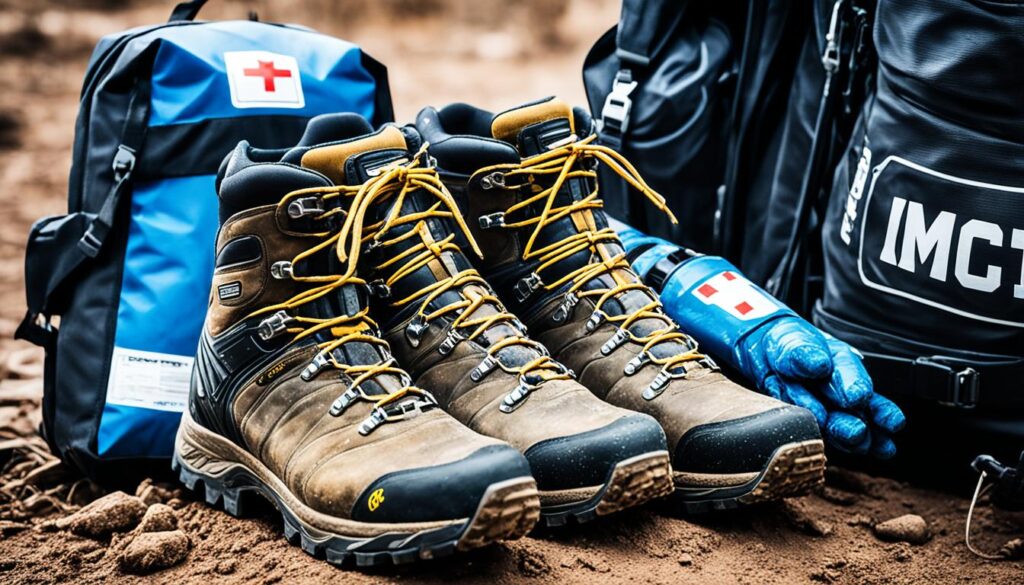
Stay on Designated Trails
When off-roading, it’s important to stay on designated trails to ensure both your safety and the preservation of the environment. Straying off the established paths can have negative consequences, causing damage to the natural habitat and disrupting the delicate balance of the ecosystem.
By adhering to the principle of “tread lightly,” off-roaders can minimize their impact on the environment and contribute to the sustainability of off-roading. Stick to the trails that have been specifically designated for off-roading activities.
Staying on designated trails not only protects the environment but also ensures your own safety. Established off-roading trails are typically maintained and have undergone assessments to determine their suitability for vehicles.
Always take the path of least resistance and follow the trail markers or signs to stay on the right track. It’s also essential to drive responsibly, respecting the terrain and minimizing the disturbance to wildlife and plant life.
“The earth does not belong to us; we belong to the earth.” – Chief Seattle
Remember, off-roading is an adventure that can be enjoyed responsibly. By staying on designated trails, you will not only protect the environment but also help keep off-roading accessible for future enthusiasts.

| Benefits of Staying on Designated Trails | Impacts of Going Off-Trail |
|---|---|
| Preserves the natural habitat | Causes damage to sensitive ecosystems |
| Minimizes the disturbance to wildlife | Disrupts animal habitats |
| Allows for proper trail maintenance and upkeep | Increases the risk of erosion and soil damage |
Learn Off-Roading Skills and Find Off-Roading Partners
As a beginner in off-roading, it’s crucial to develop the necessary skills to navigate challenging terrains. One of the best ways to enhance your off-roading abilities is by connecting with experienced off-roaders and joining off-roading clubs. These resources not only provide valuable guidance and tips but also offer a supportive community that shares your passion for off-roading.
If you’re looking to expand your knowledge of off-roading techniques, vehicle modifications, and local trails, consider joining vehicle-specific forums. These online communities are a treasure trove of information, where you can learn from the experiences and expertise of seasoned off-roaders. Ask questions, share your own insights, and delve deeper into the world of off-roading.
Local off-road clubs are another excellent resource for beginners. These clubs organize regular off-roading training runs, where you can learn from experienced off-roaders in a hands-on environment. You’ll have the opportunity to practice off-roading techniques, understand the limits of your vehicle, and gain confidence in tackling different terrains.
By joining off-roading clubs and participating in training runs, you can find off-roading partners who share your enthusiasm and dedication. Connecting with fellow off-roaders not only enhances your learning experience but also opens doors to new off-roading adventures. Off-roaders often form lasting friendships and create unforgettable memories together while exploring off-roading trails.
“Joining local off-road clubs and connecting with experienced off-roaders is a game-changer for beginners. It’s a gateway to learning valuable skills, finding off-roading partners, and building a supportive off-roading network.” – Jane Smith, off-roading enthusiast
Benefits of Connecting with Off-Roading Partners:
- Exchange knowledge and techniques
- Share trail recommendations
- Enhance safety through mutual support
- Discover new off-roading destinations
- Experience the thrill of off-roading in a group
Remember, off-roading is not just about conquering trails; it’s also about forging connections and building a community. Embrace the opportunity to learn from others, find like-minded off-roaders, and embark on memorable off-roading adventures together.
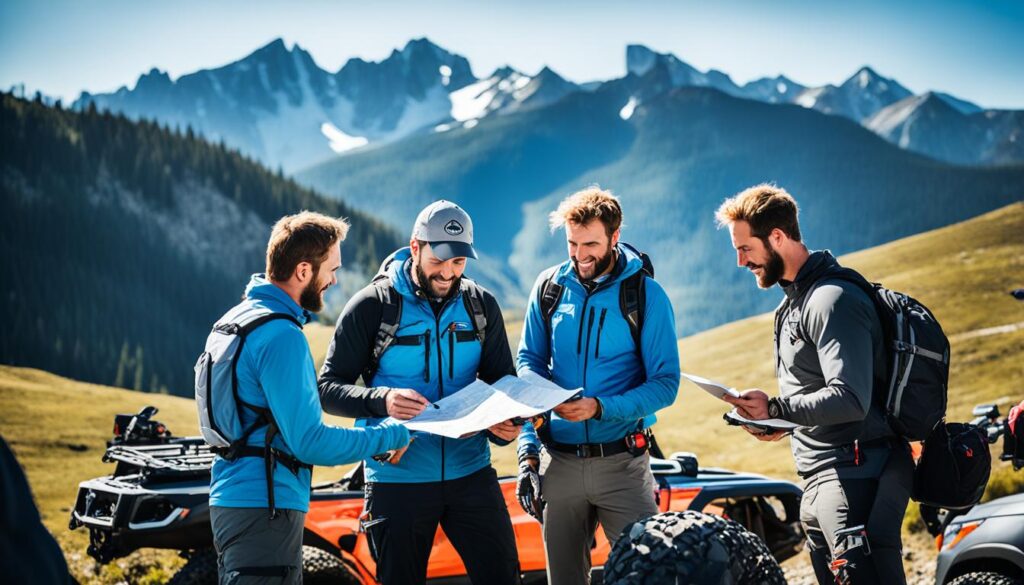
Consider Vehicle Modifications
While stock vehicles can handle many off-roading trails, there are certain modifications that can enhance their capabilities and optimize performance. However, before making any modifications, it’s crucial to thoroughly understand your vehicle and how each modification may affect its overall performance.
Researching expert sources and consulting vehicle-specific forums can provide valuable insights and guidance on the best modifications for your off-roading needs. These resources can offer expert advice on popular off-roading modifications that are tried and tested by experienced off-roaders.
When considering vehicle modifications for off-roading, there are several options to explore:
- Larger Tires: Upgrading to larger tires can provide improved traction on challenging terrains, allowing your vehicle to tackle off-road obstacles more effectively. This modification is especially beneficial for navigating through mud, sand, and rocky surfaces.
- Increased Ground Clearance: Lifting your vehicle can provide additional ground clearance, preventing your undercarriage from getting caught on rocks, branches, or other trail hazards. This modification allows for a smoother off-roading experience and reduces the risk of damage to vital vehicle components.
- Off-Road Accessories: Installing additional off-road accessories such as winches, lockers, and skid plates can greatly enhance your off-roading experience. A winch can help you recover your vehicle in case it gets stuck, while lockers improve traction on challenging terrains. Skid plates protect vulnerable parts of your vehicle’s undercarriage, preventing damage from rocks or other obstacles.
Benefits of Vehicle Modifications for Off-Roading
The right modifications can significantly improve your vehicle’s off-roading performance, enabling you to conquer more challenging trails with confidence. By customizing your vehicle to suit your specific off-roading needs, you’ll be able to:
- Overcome obstacles more effectively
- Improve traction on different terrains
- Enhance off-road maneuverability
- Minimize the risk of damage to vital vehicle components
- Ensure a safer and more enjoyable off-roading experience
It’s important to note that vehicle modifications should be made with caution and under the guidance of experienced professionals. In some cases, certain modifications may void your vehicle’s warranty or affect its on-road performance. Therefore, research and consult with experts to make informed decisions that align with your off-roading goals and vehicle’s capabilities.
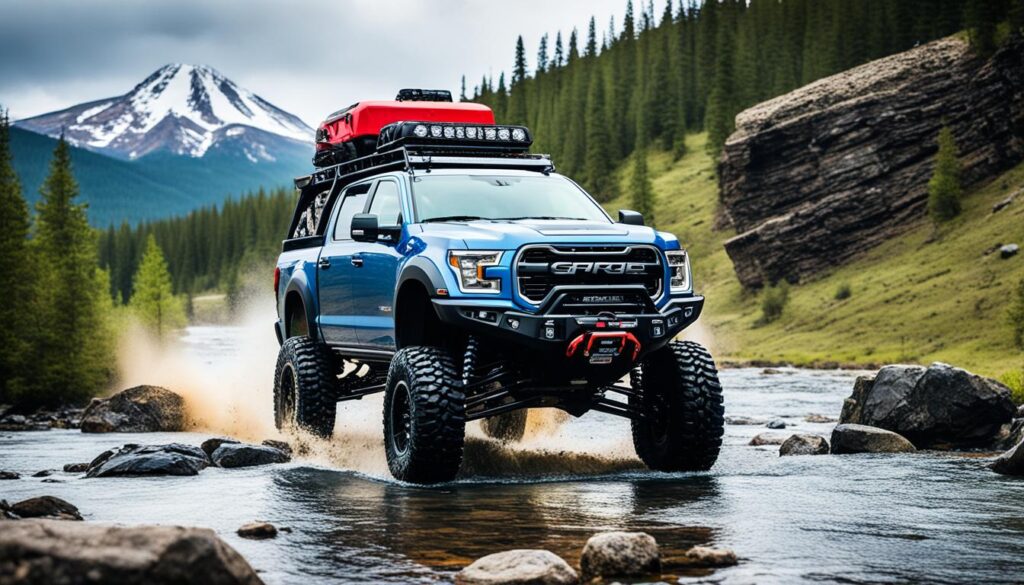
| Modification | Benefits |
|---|---|
| Larger Tires | Improved traction on challenging terrains |
| Increased Ground Clearance | Prevention of undercarriage damage |
| Off-Road Accessories | Enhanced off-roading capabilities and safety |
Find Off-Roading Destinations
When it comes to off-roading, knowing where to go is just as important as knowing how to navigate the trails. Whether you’re a beginner or an experienced off-roader, finding the right off-roading destinations is crucial for an exhilarating and memorable adventure.
Off-road parks, national forests, and BLM (Bureau of Land Management) properties offer a wide range of legal off-roading trails for enthusiasts. These locations provide well-maintained trails that cater to different skill levels and preferences, ensuring there’s something for everyone.
Researching trail guidebooks and utilizing online resources can be incredibly helpful in finding off-roading destinations that suit your needs. These resources provide valuable information such as trail difficulty ratings, terrain types, and scenic attractions along the way, allowing you to plan the perfect off-roading experience.
Remember, respecting trail regulations is essential to preserve the environment and the longevity of off-roading. Some off-road parks and trail systems may require permits or have specific rules in place, so make sure to familiarize yourself with any guidelines before hitting the trails.
To give you an idea of the variety of off-roading destinations available, here’s a table showcasing a selection of popular off-roading areas in the United States:
| Off-Roading Destination | Location | Terrain Type | Difficulty Level |
|---|---|---|---|
| Moab | Utah | Rocky | Intermediate/Advanced |
| Ocala National Forest | Florida | Mud/Sand | Beginner/Intermediate |
| Glamis | California | Sand Dunes | Advanced |
| George Washington National Forest | Virginia | Wooded/Steep | Beginner/Intermediate |
Image: 
These are just a few examples of off-roading destinations, and there are countless others waiting to be explored. Whether you prefer rocky terrains, muddy trails, sandy dunes, or wooded areas, you’ll find an off-roading destination that matches your interests and skill level.
Remember to pack the necessary gear, respect the environment, and always prioritize safety while enjoying the thrill of off-roading.
Master Common 4WDriving Techniques
When it comes to off-roading, mastering common 4WDriving techniques is essential for a successful and thrilling experience. These techniques can significantly improve your off-roading skills, making you a more confident driver. Let’s take a closer look at some of these techniques:
Proper Hand Positioning
One of the fundamental techniques to master is proper hand positioning on the steering wheel. Maintaining the correct grip and hand placement allows for better control and maneuverability in challenging terrains. Keep your hands at the 9 and 3 o’clock positions or the 10 and 2 o’clock positions to ensure optimal control.
Understanding Differentials
Understanding the position and function of your vehicle’s differentials is crucial for navigating various off-road conditions. Differentials are responsible for distributing power to the wheels, allowing them to rotate at different speeds. By understanding how differentials work, you can optimize traction and improve overall performance when encountering uneven terrain or obstacles.
Proper Braking Techniques
Knowing how to brake effectively is essential for maintaining control and stability while off-roading. It’s important to avoid sudden or harsh braking, as it can cause your vehicle to skid or lose traction. Instead, practice modulating the brakes smoothly and gradually to maintain control and prevent wheel lock-up.
By taking the time to learn and practice these techniques in various terrains, you can enhance your off-roading skills and elevate your performance on the trails.
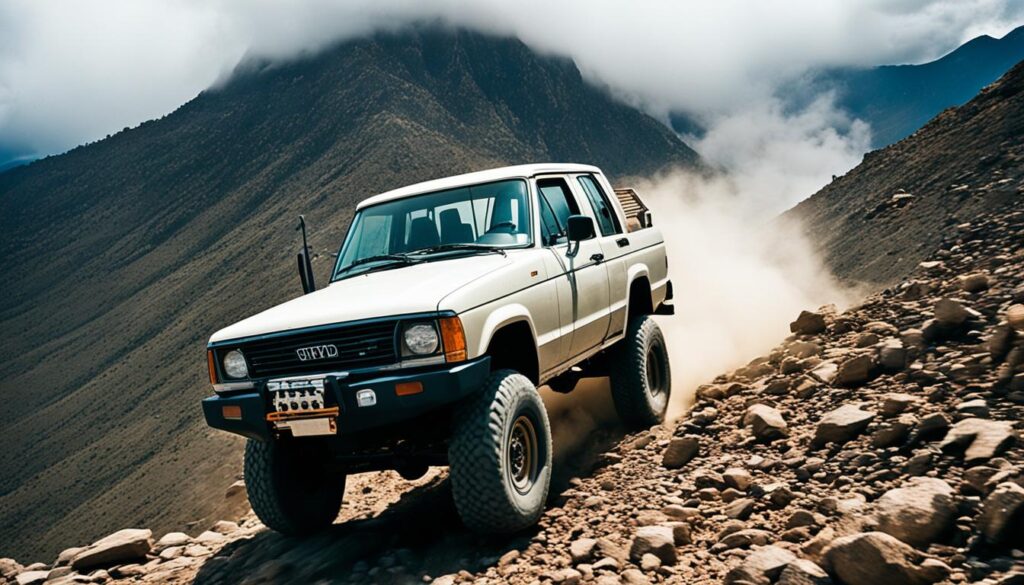
Now that you’re familiar with these essential 4WDriving techniques, it’s time to put them into action and elevate your off-roading skills to new heights. Remember to always prioritize safety, be aware of your surroundings, and continuously improve your off-roading abilities through practice and experience.
Learn Specific Terrain Techniques (Water Crossings, Hill Climbing, Dust Control, Mud Driving, Sand Driving)
When it comes to off-roading, each terrain type presents its own set of challenges. As a beginner, it’s crucial to learn specific techniques and considerations for tackling different terrains such as water crossings, hill climbing, dust control, mud driving, and sand driving. By understanding the unique demands of each terrain, you can navigate safely and confidently through any off-road adventure.
Water Crossings
Water crossings can be treacherous if not approached with caution. Before driving through any body of water, evaluate its depth and current. Maintain a consistent speed to create a bow wave that dissipates water around your vehicle. Always cross perpendicular to the water flow and avoid sudden acceleration or deceleration. Additionally, ensure your off-roading vehicle is properly equipped with a snorkel and sealed electrical components to protect against water damage.
Hill Climbing
Hill climbing requires a combination of power, momentum, and technique. Approach hills at a controlled speed and maintain a steady throttle to prevent wheel spin. Select an appropriate gear that allows your vehicle’s engine to operate within its power band. As you ascend, keep your vehicle straight and resist the temptation to steer aggressively. Remember to maintain proper tire grip by reducing tire pressure and engaging any available traction control systems.
Dust Control
Driving in dusty environments can hinder visibility and cause damage to your vehicle’s engine and air filters. To control dust, maintain a safe following distance from the vehicle ahead and activate your headlights for increased visibility. Consider installing a pre-filter or an upgraded air intake system to minimize dust buildup. Additionally, regularly inspect and clean your vehicle’s air filters to prevent clogging and ensure optimal engine performance.
Mud Driving
Mud driving demands precise throttle control and a keen understanding of traction. Maintain a consistent speed to prevent your vehicle from sinking or getting stuck. Use a low gear and gently apply and release the throttle to find the optimal traction. Avoid sudden braking or accelerating, as these actions can cause loss of control. It’s also important to equip your vehicle with mud terrain tires and consider installing recovery equipment such as winches and tow straps in case you need assistance.
Sand Driving
Driving on sandy terrains requires specific techniques to avoid getting bogged down. Reduce tire pressure to improve traction and floatation, allowing the tires to better grip the sand. Use a higher gear and gently accelerate to maintain momentum. Avoid sudden changes in direction, as sharp turns can lead to a loss of control. It’s crucial to continuously scan the terrain for potential hazards and soft spots to navigate safely.
| Terrain | Technique | Considerations |
|---|---|---|
| Water Crossings | Approach perpendicular to flow Create a bow wave Protect vehicle from water damage | Assess water depth and current Ensure vehicle has a snorkel and sealed components |
| Hill Climbing | Maintain steady throttle Choose appropriate gear Keep vehicle straight | Control speed and prevent wheel spin Reduce tire pressure for improved traction |
| Dust Control | Maintain safe following distance Use headlights for visibility Clean air filters regularly | Install pre-filters or upgraded air intake systems Protect engine from dust accumulation |
| Mud Driving | Maintain consistent speed Apply and release throttle gently Equip vehicle with mud terrain tires | Avoid sudden braking or accelerating Install recovery equipment |
| Sand Driving | Reduce tire pressure Accelerate gently Scan for hazards | Use higher gear Avoid sudden changes in direction |
By mastering these specific terrain techniques, you’ll be well-prepared to tackle the challenges that each type of terrain presents. Remember to gather insights from expert sources, practice in controlled environments, and constantly refine your off-roading skills. With time and experience, you’ll become a skilled off-roader capable of navigating any terrain with confidence.
Conclusion
Embarking on the off-roading journey as a beginner may feel overwhelming, but with the right guidance and preparation, it can become an exhilarating experience. By applying the essential off-roading tips and techniques, beginners can navigate their way through the challenges and emerge as confident off-roaders.
Start by avoiding common mistakes that can jeopardize safety and hinder progress. Going off-road alone is discouraged, as having experienced off-roaders and off-roading partners by your side can provide valuable support and assistance when needed.
Additionally, prioritize the development of off-roading skills and continuously expand your knowledge. Joining local off-road clubs, participating in training runs, and connecting with fellow off-roaders will not only enhance your learning but also foster a sense of community and camaraderie.
Remember that off-roading is not just about adventure; it also comes with a responsibility to prioritize safety and preserve the environment. Equipping yourself with the right gear, exploring designated trails, and practicing specific techniques for different terrains will ensure a safe and enjoyable off-roading experience for yourself and future generations of off-roaders.
FAQ
Can I go off-roading alone as a beginner?
It is strongly recommended to never go off-road alone, especially as a beginner. Off-roading requires practice and mistakes can happen. Going with another vehicle and experienced off-roaders provides support and assistance if something goes wrong. Joining local off-road clubs or finding off-roading buddies is a great way to ensure a safer off-road experience.
Where should beginners start with their off-roading journey?
Beginners should start with easy trails and gradually work their way up to more challenging ones. Starting slow allows you to develop your off-roading skills, understand your vehicle’s capabilities, and gain confidence. Crawling before walking is essential in off-roading.
What kind of gear do I need for off-roading?
Having the right gear is essential for off-roading beginners. Basic tools, a spare tire, food, water, a first-aid kit, and appropriate clothing are important to bring for emergencies. Consider lowering your tire pressure for better traction and having a portable air compressor for tire inflation. Being properly equipped ensures readiness for any off-roading situation.
Why is it important to stay on designated trails?
Staying on designated trails is crucial for preserving the environment and keeping off-roading trails open. Going off-trail can cause damage and disrupt ecosystems. By following the principle of “tread lightly” and driving responsibly, you minimize the impact on the environment and contribute to the sustainability of off-roading.
How can beginners develop their off-roading skills?
Beginners can develop their off-roading skills by joining vehicle-specific forums, local off-road clubs, and participating in off-roading training runs. These resources provide valuable information, tips for specific terrain types, vehicle modifications, and local trail recommendations. Connecting with fellow off-roaders enhances the learning experience and provides opportunities for off-roading companionship and support.
Should I consider modifying my vehicle for off-roading?
While stock vehicles can handle many off-roading trails, some modifications can enhance their capabilities. It is important to thoroughly understand your vehicle and how each modification may affect its performance. Research expert sources, consult vehicle-specific forums, and consider modifications such as larger tires for improved traction, lifting the vehicle for increased ground clearance, and installing additional off-road accessories like winches and lockers.
Where can I find off-roading destinations?
Off-road parks, national forests, and BLM (Bureau of Land Management) properties offer legal off-roading trails. Researching trail guidebooks and utilizing online resources can help you find off-roading destinations that suit your skill level and preferences. Remember to respect trail regulations and obtain any necessary permits before embarking on your off-roading adventure.
What are some common 4WDriving techniques I should know?
Mastering common 4WDriving techniques is essential for a successful off-roading experience. Techniques such as hand position on the steering wheel, understanding the position of your vehicle’s differentials, and proper braking techniques can make a significant difference in your off-roading performance. Take the time to learn these techniques and practice them in various terrains to enhance your off-roading skills and confidence.
What are some specific techniques for different terrains?
Each terrain type requires specific techniques and considerations for off-roading beginners. Learning how to tackle water crossings, hill climbs, and different types of terrains like mud and sand is essential. Research expert sources, utilize online resources, and practice these techniques in controlled environments to build your confidence and ensure a safe off-roading experience.
How can beginners ensure a safe and enjoyable off-roading experience?
Beginners can ensure a safe and enjoyable off-roading experience by following these tips and techniques. Avoid common mistakes, develop your off-roading skills, equip yourself with the necessary gear and knowledge, connect with the off-roading community, find off-roading destinations that suit your preferences, and practice specific techniques for different terrains. Always prioritize safety, respect the environment, and enjoy the thrill of off-roading responsibly.

